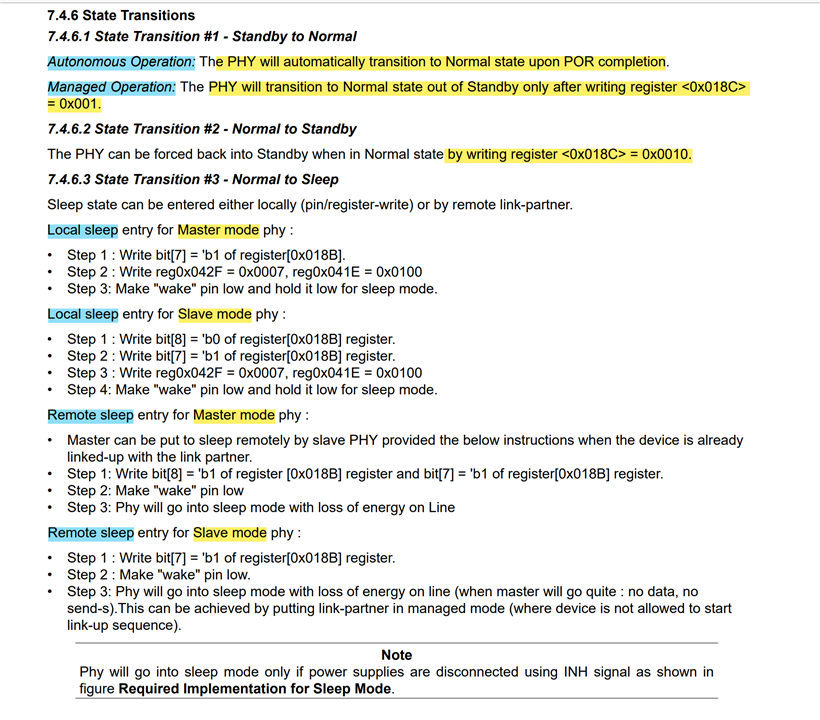Hi all,
As mentioned in datasheet, remote sleep is supported by DP83TG720S-Q1
Actually, I am little confused about how to know that remote sleep is required without any signals from the link partner.
Is there any other signals or interrupts that the link partner sends to indicate that the PHY will go to sleep remotely by other PHY so that i can write a code to set the registers according to the Remote sleep entry?
Thanks in advance,
Best Regards,
Ahmed.





